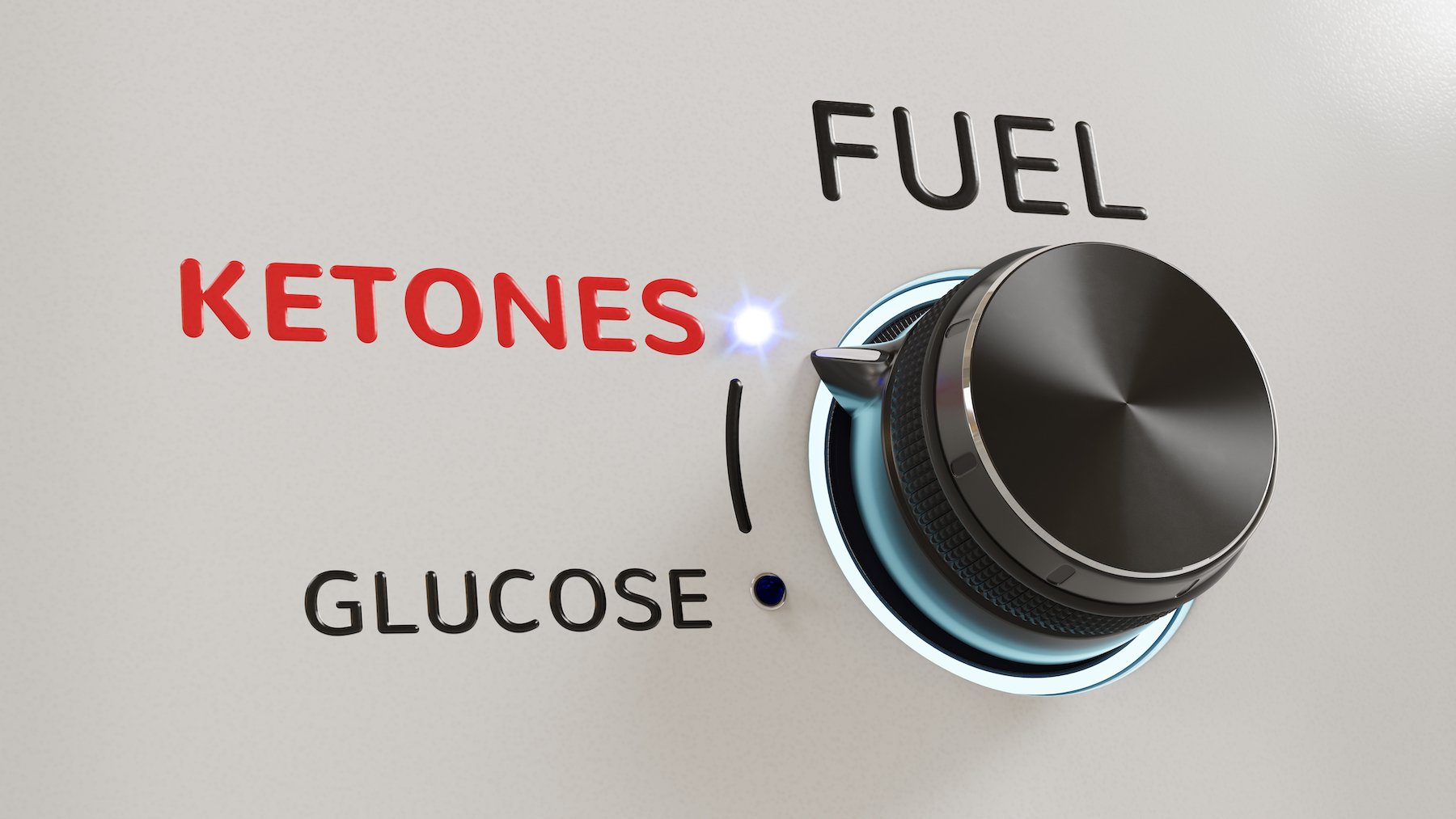Being metabolically flexible means your body can better accommodate its energy demands depending on its needs in the moment—whether you’re at the gym, at your desk, or in your bed. The benefits of being metabolically flexible include a more efficient metabolism, potentially fewer cravings, improved biomarkers, and just feeling better overall. The issues with being metabolically inflexible include insulin resistance, weight gain, hunger or cravings, and a sense of sluggishness or fatigue.
To perform their functions, our cells glean energy from the foods we eat. All macronutrients—carbohydrates, proteins, and fats—ultimately break down into glucose and fatty acids, though in different ways and at different rates. But when you’ve depleted circulating glucose from your bloodstream from a recent meal, your body must rely more on glycogen (stored glucose) and fat.
Our fat stores come from excess food consumption. First, excess glucose is stored in the liver and our muscles as glycogen. But in further excess, the body will convert glucose to triglycerides to be stored in fat cells. We need some fat stores for our bodies to function properly, but “ectopic fat”in the liver and muscle from surplus calories is highly correlated with insulin resistance.
The body’s ability to switch to different fuel sources efficiently and effectively, depending on its needs at the time, is considered metabolic flexibility. But this flexibility, or inflexibility in many cases, differs from person to person.
What’s the difference between metabolic flexibility and metabolic health?
Metabolic flexibility is a sign of good metabolic health, while metabolic inflexibility is a sign of dysregulated, or impaired, metabolic health. However, metabolic flexibility and metabolic health are not the same things.
What is metabolism?
Metabolism encompasses all the metabolic (chemical) processes the body uses to convert fuel sources into energy. While we often shorthand this system as “burning fat or glucose for glucose,” the actual processes are more nuanced and multi-faceted than that simplified view.
When we eat, our blood glucose levels rise. As a result of increasing blood glucose (also called blood sugar), our pancreatic beta cells release insulin. Insulin signals cells to uptake glucose for energy. We might need that energy right away. If not, excess glucose is stored in the short term as glycogen in the muscles and the liver via glycogenesis. However, it’s stored as triglycerides (fat) long-term via lipogenesis. When the body needs more glucose and isn’t getting it from food, it can convert glycogen back to glucose and release it via glycogenolysis.
In the continued absence of glucose intake from food, eventually the body will deplete its glycogen stores. It will then need to turn to other fuel sources. The body can synthesize glucose from different sources, such as glycerol (fat) and amino acids (protein) through gluconeogenesis. However, only a small amount of glycerol can be converted to glucose. But fatty acid chains can be converted to ketone bodies through ketogenesis. And ketone bodies can be used as an alternate fuel source, especially for the heart and brain.
What is metabolic health?
Metabolic health means that all of these metabolic systems are functioning well. Although we don’t have a universal definition of what constitutes metabolic health, doctors often use five measurements as an indicator: waist circumference, fasting glucose, blood pressure, triglycerides, and high-density lipoprotein (HDL) cholesterol. A person is considered metabolically healthy if these metrics are all within the normal range without medication control. Having poor measurements in three of these five metrics constitutes metabolic syndrome.
What is metabolic flexibility?
Metabolic flexibility means the body can shift efficiently between the fuel sources described above, depending on its needs. Consider our primitive ancestors who faced food scarcity. Their bodies required the ability to store glucose, both in the short and the long term, for energy needs when access to food was limited.
In modern times, however, where many people eat multiple carbohydrate-heavy meals a day and snack throughout, the body generally has an abundance of glucose available at all times and doesn’t readily switch from burning glucose to burning alternate fuel sources except under specific conditions. For example, during steady state zone 2 exercise, although your body may be using some glucose simultaneously, it mostly taps into fat as a fuel source.
Without that exercise and with continued overconsumption of carbs, the body may continually be storing glucose in the long term as fat rather than prioritizing fat for fuel. And it may also drive hunger or cravings. Metabolic flexibility is aided by two hormones that help regulate blood sugar: insulin and glucagon. Overeating carbohydrates can increase the insulin-to-glucagon ratio, whereas fasting lowers this ratio. And a higher ratio drives appetite.
Overconsumption and metabolic inflexibility result in what researchers call “mitochondrial gridlock.” Mitochondria are the powerhouse of cells. If you’re metabolically flexible, the mitochondria choose which fuel they need and help the body balance energy supply and demand. But overconsumption causes congestion and confusion for mitochondria over which fuel it needs when, hence the gridlock concept; mitochondria end up not knowing what to do with all the calories. This can result in impaired metabolism, insulin resistance, and mitochondrial dysfunction, all of which degrade metabolic health.
What are the benefits of metabolic flexibility?
The benefits of metabolic flexibility extend to your energy levels, exercise performance, body composition, and overall health and well-being.
Better energy levels
Imagine eating a plain bagel for breakfast, which is mostly processed carbohydrates like refined white flour and added sugar. High glucose levels will hit the bloodstream more quickly than insulin can shuttle it into cells, causing a blood sugar spike—a higher-than-normal glucose concentration in the blood. Blood sugar spikes are often followed by crashes (reactive hypoglycemia)—when the body jumps into action to overcorrect a spike. It does this with an insulin surge, signaling cells to uptake all that glucose. With no more glucose available in the bloodstream, and if your body doesn’t easily toggle to a different fuel source because of elements of “mitochondrial gridlock,” a crash may leave you (within just two to three hours) feeling low energy, shaky, nauseous, hungry, moody, unable to focus, and more. Metabolic flexibility helps prevent hypoglycemia and, therefore that energy crash.
More endurance
Metabolic flexibility may improve your exercise endurance—and vice versa. Endurance-trained athletes are more metabolically flexible than sedentary people because endurance training builds metabolic flexibility over time. Could boosting metabolic flexibility also help build endurance? Research suggests that training in a fasted state can help, as it trains the body to have an easier time flipping the switch from burning glucose to burning fat while preserving some glycogen stores.
We have a lot more fat energy stored in our body than glycogen. Glycogen makes up only about 4% of the body’s fuel storage. That higher ratio is essential for endurance. Think about the recreational marathon runner. Many runners “hit the wall”—meaning they feel fatigued and slow their pace—at the 20-mile mark of the 26.2-mile race. Although the long-distance runner burns a mix of glucose and fat throughout a steady-pace run, eventually, they will deplete almost all their glycogen stores, and their body will have to turn to burning those fat stores for fuel to keep going. The body can take a moment to adjust to the switch, hence that feeling of hitting the wall. But the point is that a marathon runner wants to delay that moment as long as possible and make the gradual switch to alternate fuel sources as seamless as possible. They do that by training the body with progressively longer runs throughout their training program leading up to the race. In part, they are teaching their body to be metabolically flexible.
Improved insulin sensitivity
Insulin resistance occurs when cells have become resistant to insulin’s signal to let glucose in, leaving high amounts of glucose in the bloodstream. Insulin resistance is associated with metabolic inflexibility, whereas metabolic flexibility is associated with insulin sensitivity, where cells respond well to the hormone’s signals. Less circulating insulin can help ward off insulin resistance.
Researchers are still trying to understand the exact connections between metabolic inflexibility and insulin resistance, including whether one causes the other. Rodent studies show that metabolic inflexibility occurs during early signs of glucose intolerance, meaning when glucose tests, such as fasting glucose, start to show higher blood sugar levels. Likely, the mitochondrial gridlock or congestion that is a feature of metabolic inflexibility impairs or changes how the body responds to insulin.
Improved glucose processing
When the body remains sensitive to insulin’s signaling, as is the case with metabolic flexibility, it processes glucose more efficiently. Metabolic flexibility helps prevent blood sugar spikes and dips. In a metabolically flexible body, the mitochondria will choose glucose if you’ve just eaten, helping to prevent hyperglycemia (when blood sugar spikes) by pulling it out of the bloodstream. And the body will switch to fat as fuel if you haven’t eaten in a while, which will help prevent hypoglycemia (low blood sugar).
Improved fat burning
Metabolic flexibility increases fatty acid oxidation, your ability to burn fat. The more often your body flips the switch from burning carbs to burning fat, the more fat you’ll burn, resulting in improved body composition.
How to build metabolic flexibility
You can improve your metabolic flexibility with several strategies.
Keep your blood sugar stable
Instead of spikes and crashes, aim to keep your blood sugar more stable by reducing your reliance on refined carbohydrates and eating more healthy fats, protein, and fiber. A decrease in refined or starchy carbohydrate consumption will mean your body will have to turn to other fuel sources, especially fat, more readily.
Track your glucose and ketones
To ensure that you’re eating a diet that doesn’t cause wide fluctuations in blood sugar that can lead to insulin resistance, track your glucose levels. Wearing a continuous glucose monitor is one of the easiest ways to see how foods affect blood sugar. You might also consider monitoring ketones. Ketones are produced when your body is burning fat for fuel. Ketones can be tested via blood, urine, and breath. Tracking your ketone levels can help you see when you’re in fat-burning mode.
Try intermittent fasting
Intermittent fasting, also called time-restricted eating, involves eating within a short window during the day, such as 6 or 8 hours, and fasting for the rest, with a significant portion of the fast occurring while you sleep. Fasting forces your body to flip the switch and rely on other fuel sources, specifically fat (converted to glucose) and ketone bodies produced from fatty acids.
Exercise regularly
Our mitochondria, the powerhouse of cells, play essential roles in metabolic flexibility. Exercise of all types improves mitochondrial function by forcing mitochondria to adapt to increased demands. For the best balance, incorporate a mix of endurance, high heart rate, and resistance training.
Fatty-acid oxidation, aka fat burning, increases with endurance training. And endurance training, in general, can help increase metabolic flexibility by priming your body to better switch between fuel sources. A single session of vigorous exercise can enhance insulin action for a full day and boost metabolic flexibility. And healthy muscle, built with adequate protein intake and resistance training, acts like a sponge for glucose.
Bottom line
Metabolic flexibility, your body’s ability to switch efficiently and effectively between fuel sources depending on its needs at the moment, is a sign of good metabolic health. Each person has a different level of metabolic flexibility, or they may be metabolically inflexible, where the body minimally or inefficiently taps into fat stores for fuel. Dietary and exercise strategies that reduce fasting glucose, fasting insulin and glucose spikes will ramp up your metabolic flexibility and fat oxidation. You can use a mix of strategies to boost your metabolic flexibility for better body composition, reduced cravings, more energy, and improved overall health.
 See how metabolically flexible you are
See how metabolically flexible you are
The best way to understand how well your body processes glucose is with a continuous glucose monitor and an app like Levels to help you interpret the data. Levels members get access to the most advanced CGMs and personalized guidance to build healthy, sustainable habits. Click here to learn more about Levels.

 See how metabolically flexible you are
See how metabolically flexible you are






